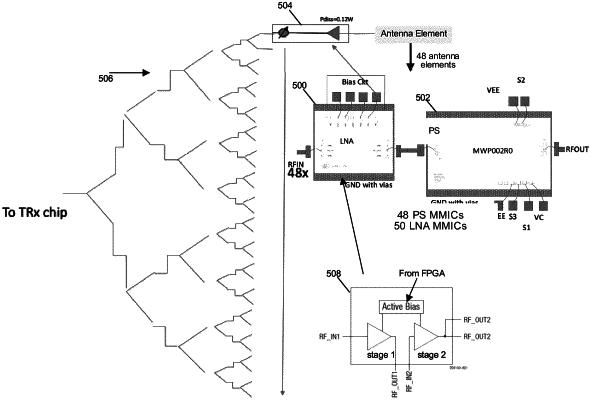| CPC G01S 7/032 (2013.01) [G01S 7/417 (2013.01); G01S 13/726 (2013.01); G01S 13/931 (2013.01)] | 17 Claims |

|
1. A radar system for object identification, comprising:
a beam steering receive antenna configured to receive a radar return signal from a surrounding environment, wherein the beam steering receive antenna comprises at least one center antenna element and at least one edge antenna element;
a low-noise amplifier (LNA) circuit having a plurality of LNAs, each LNA of the plurality of LNAs coupled to the at least one center antenna element and the at least one edge antenna element, wherein each LNA of the plurality of LNAs is configured to apply a gain to the radar return signal to generate an amplified radar return signal, the amplified radar return signal having an amplitude tapering with a reduction of amplitude in antenna side lobes;
a combination network having one or more center combination networks and one or more edge combination networks, wherein:
the one or more center combination networks are configured to receive the amplified radar return signal originated from the at least one center antenna element,
the one or more edge combination networks are configured to receive the amplified radar return signal originated from the at least one edge antenna element, and
the one or more edge combination networks comprise at least one more stage than the one or more center combination networks, and the reduction of amplitude in the antenna side lobes is based on extra losses from the at least one more stage of the one or more edge combination networks; and
a perception engine configured to detect a plurality of objects in the amplified radar return signal and identify the plurality of detected objects in the surrounding environment with one or more neural networks using machine learning or computer vision techniques.
|